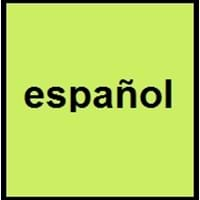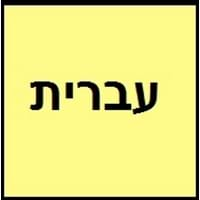Countries
Andora, Argentina, Aruba, Australia, Belize, Bolivia, Brazil, Canada, Chile, Colombia, Costa Rica, Cuba, Dominican Republic, Ecuador, El Salvador, Equatorial Guinea, France, Gibraltar, Guatemala, Honduras, Jamaica, Latvia, Luxembourg, Mexico, Morocco, Namibia, Netherlands Antilles, New Zealand, Nicaragua, Norway, Panama, Paraguay, Peru, Philippines, Puerto Rico, Russia, Spain, Sweden, Switzerland, Trinidad and Tobago, Turkey, United Kingdom, United States of America, Uruguay, Venezuela, Western Sahara
Israel
National Language
Spain
Israel
Second Language
Andora, Aruba, Australia, Austria, Belgium, Belize, Brazil, Bulgaria, Canada, Denmark, France, Germany, Ireland, Israel, Italy, Jamaica, Luxembourg, Morocco, Netherlands, Netherlands Antilles, New Zealand, Philippines, Poland, Portugal, Romania, Russia, Slovenia, Switzerland, Trinidad and Tobago, Turkey, United Kingdom, United States of America, US Virgin Islands
Israel
Speaking Continents
Africa, Asia, Europe, North America, South America
Africa, Asia, Europe
Minority Language
Brazil, France, Germany, Italy, Japan, Morocco, United Kingdom
Poland
Regulated By
Asociación de Academias de la Lengua Española
Academy of the Hebrew Language
Interesting Facts
- One of the world's most phonetic language is Spanish.
- Up to the 18th century, Spanish was diplomatic language.
- The original language of Bible is Hebrew.
- The men and women use different verbs in hebrew language.
Similar To
French Language
Arabic and Aramaic languages
Derived From
Latin
Aramaic Language
Alphabets in
Spanish-Alphabets.jpg#200
Hebrew-Alphabets.jpg#200
Writing Direction
Left-To-Right, Horizontal
Right-To-Left, Horizontal
Thank You
Gracias
תודה (Toda)
How Are You?
Cómo estás?
מה שלומך? (ma shlomxa)
Good Night
Buenas Noches
לילה טוב (Laila tov)
Good Evening
Bonne soirée
ערב טוב (Erev tov)
Good Afternoon
Buenas Tardes
אחר צהריים טובים (Achar tzahara'im tovim)
Good Morning
Buenos Días
בוקר טוב (Boker tov)
Please
Por Favor
בבקשה (bevekshah)
Sorry
triste
סליחה! (Slicha)
Bye
adiós
להתראות (Lehitraot)
I Love You
Te Quiero
אני אוהבת אותך (Ani ohevet otcha)
Excuse Me
Discúlpeme
בבקשה!
Dialect 1
Mexican Spanish
Ashkenazi Hebrew
Where They Speak
Mexico
Israel
How Many People Speak
Not Available
Dialect 2
Cuban Spanish
Samaritan Hebrew
Where They Speak
Cuba
Israel, Palestine
How Many People Speak
Not Available
Dialect 3
Puerto Rican Spanish
Yemenite Hebrew
Where They Speak
Puerto Rico
Israel
How Many People Speak
Not Available
Speaking Population
Not Available
Native Name
Español
עברית / עִבְרִית (ivrit)
Alternative Names
Castellano, Castilian, Español
Israeli, Ivrit
French Name
espagnol; castillan
hébreu
German Name
Spanisch
Hebräisch
Pronunciation
[espaˈɲol], [kasteˈʎano]
[(ʔ)ivˈʁit] - [(ʔ)ivˈɾit]
Ethnicity
Not Available
Not Available
Language Family
Indo-European Family
Afro-Asiatic Family
Branch
Not Available
Canaanitic
Early Forms
Old Spanish and Spanish
Biblical Hebrew, Mishnaic Hebrew, Medieval Hebrew, Hebrew
Standard Forms
Pluricentric Standard Spanish
Modern Hebrew
Signed Forms
Signed Spanish
Signed Hebrew
Scope
Individual
Individual
ISO 639 6
Not Available
Not Available
Glottocode
stan1288
hebr1246
Linguasphere
51-AAA-b
12-AAB-a
Language Type
Living
Living
Language Linguistic Typology
Subject-Object-Verb
Subject-Verb-Object, Verb-Subject-Object
Language Morphological Typology
Fusional, Synthetic
Fusional, Synthetic
Spanish and Hebrew Greetings
People around the world use different languages to interact with each other. Even if we cannot communicate fluently in any language, it will always be beneficial to know about some of the common greetings or phrases from that language. This is where Spanish and Hebrew greetings helps you to understand basic phrases in Spanish and Hebrew language. Spanish word for "Hello" is hola or Hebrew word for "Thank You" is תודה (Toda). Find more of such common Spanish Greetings and Hebrew Greetings. These greetings will help you to be more confident when conversing with natives that speak these languages.
Spanish vs Hebrew Difficulty
The Spanish vs Hebrew difficulty level basically depends on the number of Spanish Alphabets and Hebrew Alphabets. Also the number of vowels and consonants in the language plays an important role in deciding the difficulty level of that language. The important points to be considered when we compare Spanish and Hebrew are the origin, speaking countries, language family, different greetings, speaking population of these languages. Want to know in Spanish and Hebrew, which language is harder to learn? Time required to learn Spanish is 24 weeks while to learn Hebrew time required is 44 weeks.





